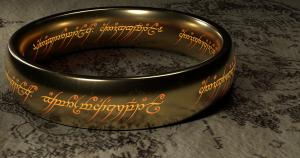 Did you know JRR Tolkien was critically instrumental in the conversion to C.S. Lewis to confessional Christianity? The author of The Lord of the Rings, a close friend of C.S Lewis (whom his friends called Jack), helped open Lewis’ eyes to the truth of Christianity through Lewis’ love and appreciation of myth. This happened on a walk in the early hours on September 20th, 1931. While at this time a theist, Lewis viewed the story of Christ as he did all myths, as “lies breathed through silver.”
Did you know JRR Tolkien was critically instrumental in the conversion to C.S. Lewis to confessional Christianity? The author of The Lord of the Rings, a close friend of C.S Lewis (whom his friends called Jack), helped open Lewis’ eyes to the truth of Christianity through Lewis’ love and appreciation of myth. This happened on a walk in the early hours on September 20th, 1931. While at this time a theist, Lewis viewed the story of Christ as he did all myths, as “lies breathed through silver.”
Pagan Myths vs. True Myth
Tolkien rebuffed the claim by stating that, while Christianity shared mythical elements with paganism (heroic death and resurrection), it exists in a category all its own as true myth. Let us allow C.S. Lewis himself explain what this realization demonstrated to him. Below are excerpts from C.S. Lewis’ letter to Arthur Greeves on October 18th, 1931, almost a month after his discussion with Tolkien.
Now what Dyson and Tolkien showed me was this: that if I met the idea of sacrifice in a Pagan story I didn’t mind it at all; again, that if I met the idea of a god sacrificing himself to himself, I liked it very much and was mysteriously moved by it: again, that the idea of the dying and reviving god… similarly moved me provided I met it anywhere except in the Gospels. The reason was that in Pagan stories I was prepared to feel the myth as profound and suggestive of meanings beyond my grasp even tho’ I could not say in cold prose what it meant.
True Myth in Jesus Christ
To Lewis, the pagan myths moved him in some “mysterious” way, but not so the story of Jesus in the gospels. In pagan myths, Lewis found inspiration and meaning even though these stories never happened. Tolkien took Lewis’ fascination and inspiration of false myths and dropped them at the feet of Jesus of Nazareth. He continues:
Now the story of Christ is simply a true myth: a myth working on us in the same way as the others, but with this tremendous difference that it really happened: and one must be content to accept it in the same way, remembering that it is God’s myth, where the others are men’s myth: i.e. the Pagan stories are God expressing Himself through the minds of poets, using such images as He found there, while Christianity is God expressing Himself through what we call “real things”.
Myth Prepares the Way for Christ
Moreover, Tolkien showed Lewis that God uses myth as a preparatory tool to provide those who eventually hear the gospel the themes needed to understand and eventually accept God’s true myth in Jesus Christ. Lewis, like other pagan theists before him, now saw the story of Jesus in a new light. He concludes:
Does this amount to a belief in Christianity? At any rate I am now certain (a) That this Christian story is to be approached, in a sense, as I approach the other myths. (b) That it is the most important and full of meaning. I am also nearly certain that it really happened.
If not for JRR Tolkien, C.S. Lewis the Christian would not exist. No Mere Christianity, The Great Divorce, God in the Dock, The Screwtape Letters, or The Chronicles of Narnia. Not only did JRR Tolkien provide the world with the greatest work of epic fantasy ever written, but he also provided the world with one of the greatest “everyman” theologians. Furthermore, through these discussions with Lewis, Tolkien helped to develop an understanding of the role of pagan myth in the spread of Christianity.
For more on this development, please read Tolkien’s work On Fairy Stories.
Like what you read? Please check out my other writing here.
Please like and follow me on Facebook.












